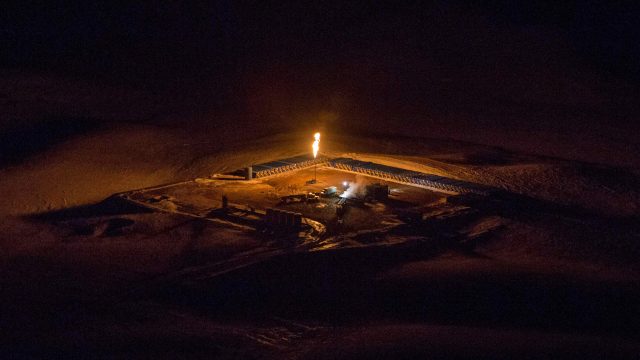North Dakota Flaring Will Drop Significantly This Summer

The Hess gas plant near Tioga has always been pretty key for flaring in North Dakota. Last year, when a storm knocked out some powerlines in western North Dakota and shut down the plant for a while, the amount of gas flared spiked. Over the winter, when the plant was shut down for upgrades, statewide flaring has also been elevated something opportunist media types anti-fossil fuel activists have been making hay about.
But now those upgrades are complete and the plant has expanded capacity for processing natural gas produced in North Dakota, and that’s going to impact the flaring rate in a big, big way (emphasis mine).
Hess, one of North Dakota’s largest oil and gas producers, recently flared about 25 percent of its natural gas. With the expanded plant, Hess now flares 15 percent to 20 percent of its natural gas, with a goal of reducing that to 10 percent or below by 2017.
Hess invested $1.5 billion between 2012 and 2014 on the plant expansion and a gas-gathering system. Prior to the expansion, the 60-year-old plant processed about 100 million standard cubic feet of gas per day.
It now processes 120 million standard cubic feet per day and has the capacity to process 250 million, with a potential to increase to 300 million.
The plant also will process natural gas produced by other companies.
“It’s not only going to be great for this company, but it’s going to be great for the state,” Hess Corp. CEO John Hess said.
The expansion is expected to reduce the state’s overall flaring percentage from 33 percent in March to the low 20s in April or May, Helms said.
When Helms talks about the flaring percentage of 33 percent in March I’m assuming he’s excluding flaring done on federal lands where the state has no regulatory oversight (looking at the numbers, it seems the overall flaring rate was . Which seems fair. If we’re going to be talking about state policies, it’s not exactly fair to include flaring on federal lands in the state where federal bureaucracy makes addressing the flaring problem difficult.
But even so, a reduction of flaring on state lands to just over 20 percent is a major shift.
I suspect, as the flaring rate drops, the activists and media types who promote an anti-fossil fuel narrative will find something else to complain about.




